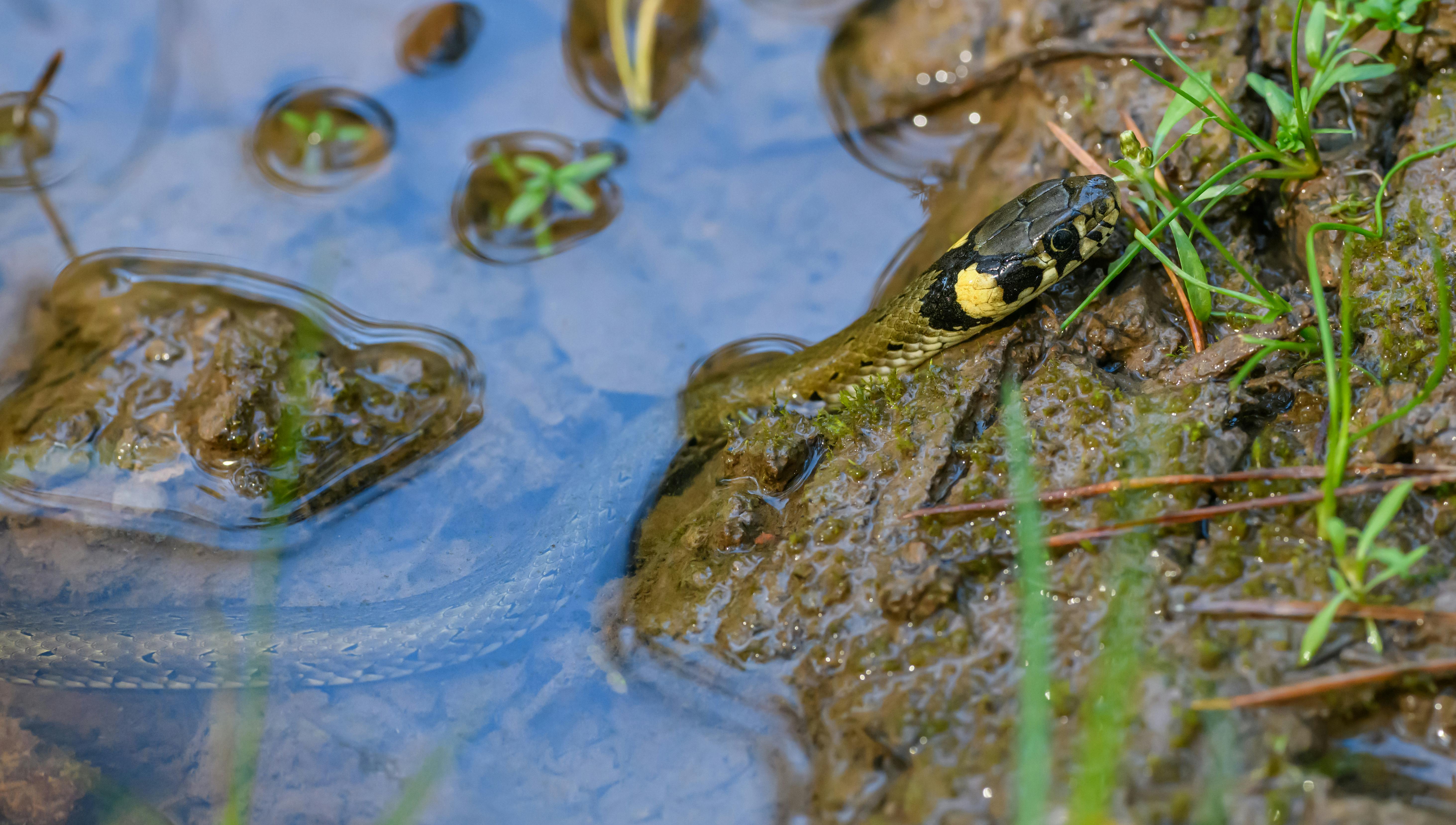Imagine you’re outside playing and you stumble upon a dead snake. What do you do? Well, you’re about to find out! In this article, we’ll show you some simple and safe ways to dispose of a dead snake. We’ll teach you how to handle it properly and give you options for getting rid of it. So let’s get started and learn what to do when you come across a dead snake.

Methods of Disposing a Dead Snake
When you come across a dead snake, you might wonder how to properly dispose of it. There are several methods you can use, depending on your situation and preferences.
Burying the Dead Snake
One common method of disposing of a dead snake is by burying it. To bury the snake, you’ll need to choose an appropriate location, away from areas where people or animals frequently visit. Dig a hole deep enough to accommodate the snake, and carefully place it inside the hole. Make sure to cover the snake with soil so that it is completely buried. To mark the burial spot, you could consider using a small rock or a plant as a memorial.
Placing the Dead Snake in a Trash Bag
Another method is to place the dead snake in a trash bag. It’s important to use double-layered bags to prevent any leakage or punctures. Carefully pick up the snake using gloves and place it inside the bag. Seal the bag tightly to contain any odor. Once sealed, you can dispose of the bag in the garbage bin. This method is suitable if you don’t have the means or space for burying the snake.
Using a Snake Disposal Service
If you prefer a more convenient option, you can consider using a snake disposal service. These services specialize in the proper removal of dead snakes. Research local disposal services in your area and contact them for assistance. They will provide you with guidelines on how to handle the situation and may arrange for pickup or drop-off. Keep in mind that some services may charge a fee for their assistance.
Contacting Local Wildlife Authorities
You can also contact your local wildlife authorities for guidance on how to dispose of a dead snake. They are knowledgeable about local regulations and can provide specific instructions. Identify the appropriate authority and reach out to their office or hotline. Provide them with information about the dead snake, such as its location and size. Follow their instructions for disposal and be sure to report any unusual findings you may come across.
Donating the Dead Snake to Research or Educational Institutions
In certain cases, you may consider donating the dead snake to research or educational institutions. Local institutions, such as universities or museums, may be interested in acquiring the snake for scientific or educational purposes. Before proceeding, explore their policies on accepting donations of deceased animals. Contact the relevant departments and inquire about the process of donation. Make sure to understand their requirements and follow their guidelines.
Composting the Dead Snake
If you practice composting, you can consider adding the dead snake to your compost bin. This method allows the snake to naturally decompose and become part of the composting process. Prepare a compost bin by following proper guidelines, ensuring it is suitable for disposing of a dead animal. Add the snake to the bin, ensuring it is covered with other compost materials. Maintain the proper composting conditions, such as turning the contents regularly. Once the compost is ready, you can use it for gardening purposes, allowing the nutrients from the snake to benefit your plants.
Freezing the Dead Snake
If you’re unable to decide on an immediate disposal method, you can temporarily freeze the dead snake. Wrap the snake in a plastic bag or wrap to avoid any direct contact. Place it in a freezer-safe container or bag, ensuring it is sealed properly. Keep the dead snake frozen until you’re ready to dispose of it. When the time comes, make sure to avoid any spillage or contamination during the disposal process.
Using an Incinerator
While not commonly accessible to individuals, some places may have access to an incinerator for the disposal of dead animals. An incinerator is a device that burns waste at high temperatures. If you have access to one, it can be a suitable method for disposing of a dead snake. However, it’s important to note that using an incinerator may require certain permissions or licenses due to potential environmental considerations.
Creating a Natural Burial Ground
In some areas, there may be designated natural burial grounds where you can lay a dead snake to rest. These areas are specifically set aside for ecological purposes, allowing for the return of organic materials to the soil. Research if there are any natural burial grounds in your vicinity and inquire about their policies regarding the disposal of deceased animals. If permitted, follow their guidelines for preparing and placing the dead snake in a respectful and environmentally friendly manner.
Cremating the Dead Snake
Cremation is a method that involves the complete combustion of an organism’s remains, resulting in ashes. If you prefer this method for disposing of a dead snake, you’ll need to find a professional cremation service that accepts animal remains. Arrange for the cremation process and prepare the dead snake accordingly. Follow any specific procedures provided by the cremation service to ensure proper and respectful handling of the remains. Once the cremation is complete, you will collect the ashes, which can be kept as a memorial or scattered in a meaningful location.
Precautions and Safety Measures
When handling a dead snake, it’s important to take certain precautions to ensure your safety and prevent any potential risks.
Wearing Protective Gloves
Always wear protective gloves when handling a dead snake. Gloves provide a physical barrier between your skin and the snake’s body, reducing the risk of exposure to harmful bacteria or parasites.
Using Proper Tools
Use appropriate tools, such as tongs or a shovel, to handle the dead snake. This will help maintain a safe distance and avoid direct contact with the snake’s body.
Avoiding Direct Contact
Do not touch the snake with bare hands. Dead snakes can still carry bacteria or parasites that may pose health risks. By avoiding direct contact, you minimize the chances of exposure.
Cleaning the Area Properly
After disposing of the dead snake, clean the area where it was found or handled. Use a suitable disinfectant or bleach solution to sanitize the area and eliminate any potential pathogens.
Disinfecting and Washing Hands
After handling the dead snake and cleaning the area, it’s crucial to thoroughly disinfect and wash your hands. Use soap and warm water to clean your hands for at least 20 seconds to ensure proper hygiene.
Proper Disposal of Protective Gear
Dispose of any used gloves or protective gear properly. Double-bag the items to prevent any potential contamination and dispose of them according to local regulations.
Being Mindful of Local Regulations
Familiarize yourself with the local regulations regarding the disposal of dead animals. Some areas may have specific guidelines or restrictions to ensure proper handling and prevent environmental risks.
Considering the Size and Condition of the Snake
The size and condition of the dead snake can influence the method of disposal. Larger snakes may require more space for burial or other disposal methods, while decomposed snakes may present different challenges in handling. Consider these factors when determining the best approach.
Avoiding Decomposition or Foul Odor
To minimize decomposition and unpleasant odors, it’s important to address the disposal of a dead snake promptly. Promptly choose and execute the appropriate disposal method to prevent any undesired consequences.
Minimizing the Risk of Infestation or Attraction
When handling or disposing of a dead snake, take precautions to minimize the risk of attracting scavengers or pests. Properly seal bags, bury the snake deeply or choose disposal methods that prevent access to the carcass.
Remember, if you are unsure about any aspect of handling or disposing of a dead snake, it’s always best to seek guidance from local authorities or professionals to ensure proper and safe disposal procedures are followed.


